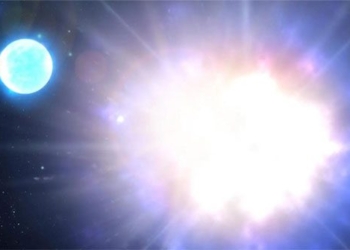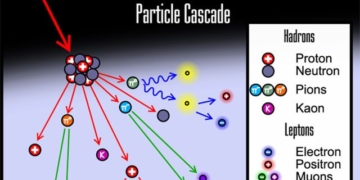A remarkable phenomenon that seemed exclusive to Earth has unexpectedly been discovered on a distant planet in the constellation Pisces.
Using data from the Exoplanet Satellite (CHEOPS) of the European Space Agency (ESA) along with several other missions by ESA and NASA, astronomers have detected signs of a multi-ring halo in the atmosphere of WASP-76b, a planet classified as a “hot Jupiter.”
This phenomenon occurs when light reflects off clouds made up of a completely homogeneous substance, which has yet to be fully understood.

Planet WASP-76b – (Photo: ESA).
Similar halos are commonly observed on Earth, but they have only been seen once on another planet, which is Venus.
This is the first time this phenomenon has been identified on an exoplanet, potentially revealing fascinating insights about the atmosphere of this world located 640 light-years away, known as WASP-76b.
The aforementioned effect can only exist with the presence of droplet-like clouds, which exist below a nearly perfect spherical shape and must last at least three years or be replenished.
For such clouds to persist, the planet must have a stable atmosphere over time, similar to Earth.
Even more intriguing, this was found on a tidally locked planet – a special type of planet that is so close to its star that it is held in place by the star’s gravitational pull, always showing one face to the star, much like how the Moon always shows one face to Earth.
This creates a permanently sunlit side and a permanently dark side.
According to a team of scientists from ESA, the Institute of Astrophysics – Space Science in Portugal, and the University of Geneva (Switzerland), WASP-76b is a unique world in many ways.
Its daytime temperatures soar above 2,400 degrees Celsius, high enough to vaporize metals. However, nighttime temperatures are significantly lower at 1,316 degrees Celsius.
Here, the rock-forming elements found on Earth melt and vaporize, only condensing on the slightly cooler nighttime side, creating small iron clouds that rain molten iron.
The atmosphere of WASP-76b is also inflated due to the gravitational force from its parent star. This planet is roughly 10% the size of Jupiter, but this inflation has made it nearly twice as large.
All these intriguing details highlight the incredible diversity of planetary worlds in the universe.





















































